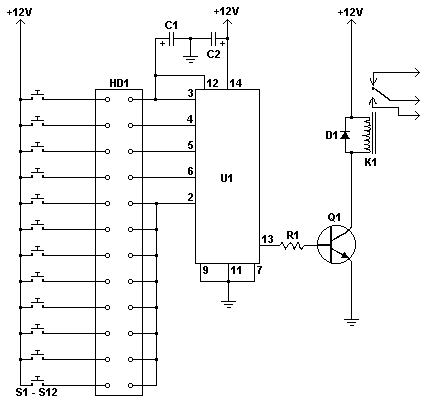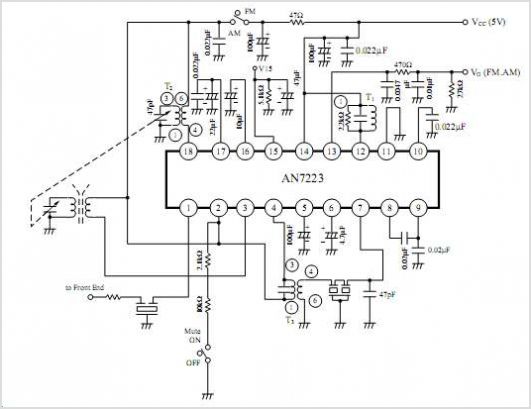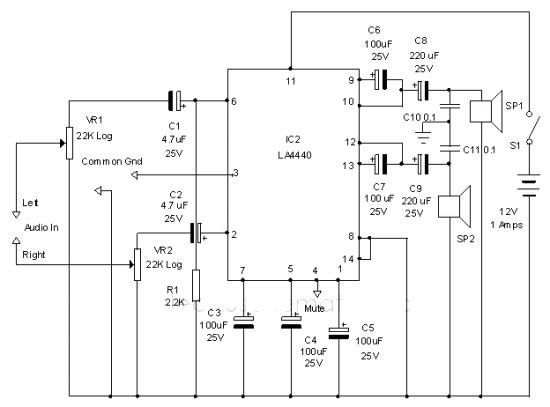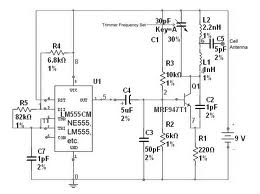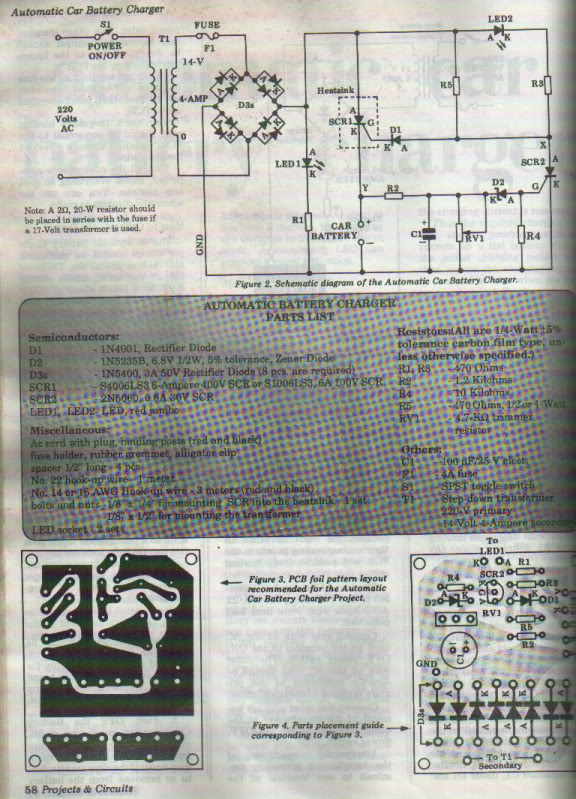
Automatic dimming light circuit
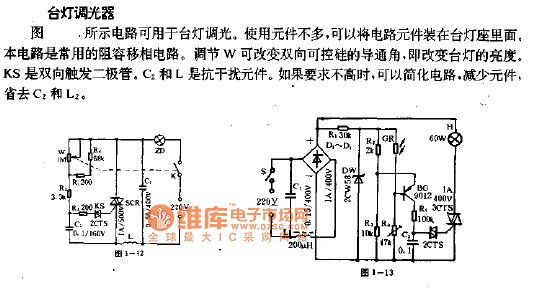
Lamp dimmer. The circuit illustrated below can be employed for dimming lamps. It utilizes a minimal number of components, which can be conveniently installed within the lamp socket. This circuit is typically utilized in RC phase shift configurations. The variable resistor (W) can be adjusted to modify the conduction angle of the triac, thereby altering the brightness of the lamp. The component KS is a bi-directional trigger diode. Capacitor C2 and inductor L are...
The lamp dimmer circuit operates based on the principles of phase control, allowing for the adjustment of the lamp's brightness by altering the phase angle at which the triac is triggered. The circuit typically consists of a triac, a variable resistor (W), a bi-directional trigger diode (KS), a capacitor (C2), and an inductor (L).
The triac serves as the main switching element, controlling the power delivered to the lamp. By adjusting the resistance of W, the phase angle can be varied, which in turn influences the point in the AC cycle at which the triac is triggered. A later trigger point results in a shorter conduction time for the triac during each half-cycle, effectively reducing the average power supplied to the lamp and dimming its brightness.
The bi-directional trigger diode (KS) is responsible for ensuring that the triac can be triggered during both the positive and negative halves of the AC waveform. This feature is essential for maintaining consistent dimming performance regardless of the AC polarity.
Capacitor C2 and inductor L form an RC network that helps to create the necessary phase shift for the triggering of the triac. The values of these components can be selected based on the desired dimming range and the characteristics of the lamp being used. It is important to ensure that the components used can handle the power levels involved to prevent overheating or failure.
Overall, this lamp dimmer circuit is an effective solution for controlling lamp brightness with a simple design that can be easily integrated into existing lamp fixtures.Lamp dimmer. The figure below shows the circuit can be used for lamp dimming. It uses a small quantity of components, which can be installed inside the lamp seat. The circuit is commonly used in RC phase shift circuit. W can be adjusted to change the triac conduction angle, which changes the lamp brightness. KS is a bi-directional trigger diode. C2 and L are.. 🔗 External reference
The lamp dimmer circuit operates based on the principles of phase control, allowing for the adjustment of the lamp's brightness by altering the phase angle at which the triac is triggered. The circuit typically consists of a triac, a variable resistor (W), a bi-directional trigger diode (KS), a capacitor (C2), and an inductor (L).
The triac serves as the main switching element, controlling the power delivered to the lamp. By adjusting the resistance of W, the phase angle can be varied, which in turn influences the point in the AC cycle at which the triac is triggered. A later trigger point results in a shorter conduction time for the triac during each half-cycle, effectively reducing the average power supplied to the lamp and dimming its brightness.
The bi-directional trigger diode (KS) is responsible for ensuring that the triac can be triggered during both the positive and negative halves of the AC waveform. This feature is essential for maintaining consistent dimming performance regardless of the AC polarity.
Capacitor C2 and inductor L form an RC network that helps to create the necessary phase shift for the triggering of the triac. The values of these components can be selected based on the desired dimming range and the characteristics of the lamp being used. It is important to ensure that the components used can handle the power levels involved to prevent overheating or failure.
Overall, this lamp dimmer circuit is an effective solution for controlling lamp brightness with a simple design that can be easily integrated into existing lamp fixtures.Lamp dimmer. The figure below shows the circuit can be used for lamp dimming. It uses a small quantity of components, which can be installed inside the lamp seat. The circuit is commonly used in RC phase shift circuit. W can be adjusted to change the triac conduction angle, which changes the lamp brightness. KS is a bi-directional trigger diode. C2 and L are.. 🔗 External reference
